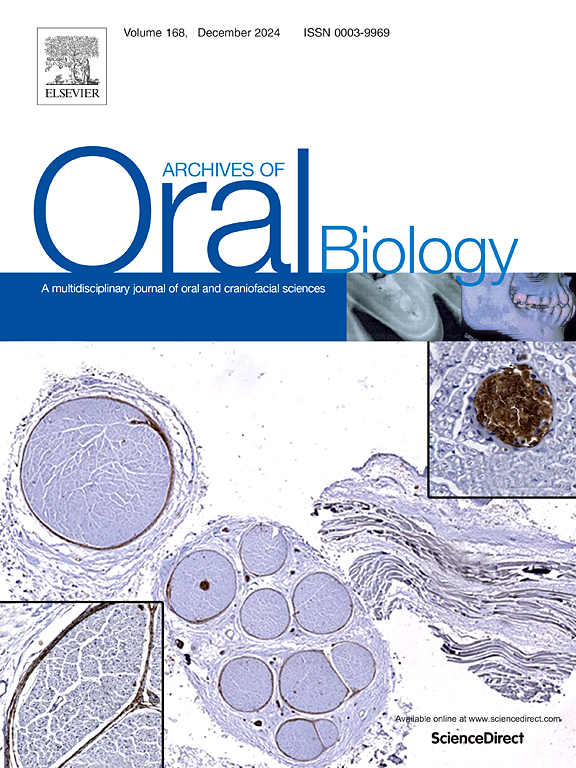Clinicopathological comparison and cytokeratin-10 expression between Lichen planus and oral lichenoid lesions
IF 2.2
4区 医学
Q2 DENTISTRY, ORAL SURGERY & MEDICINE
引用次数: 0
Abstract
Objectives
This study aimed to compare clinicopathological features and immunostaining for cytokeratin-10 between oral lichen planus and oral lichenoid lesions.
Design
This was a retrospective longitudinal study comparing lichen planus and oral lichenoid lesions diagnosed at the Oral Pathological Anatomy Service that analyzed sociodemographic and clinicopathological data and CK10 expression. Chi-square tests, Fisher's exact tests and Mann-Whitney tests or Student's t tests were used when appropriate, and p values < 0.05 were considered significant.
Results
A total of 23 lichen planus and 23 lichenoid lesions were included. There was an association between oral lichen planus and symptomatology (p = 0.031). The buccal mucosa was the most affected site in both groups: 20 patients (87.0 %) showed oral lichen planus, and 16 patients (69.6 %) oral lichenoid lesions. Bilateral (p < 0.001) striae (p = 0.004) are more characteristic of oral lichen planus. Oral lichen planus was associated with degeneration of the basal layer (p = 0.049) and with mild epithelial dysplasia (p < 0.001). Cytokeratin-10 immunostaining was similar between the groups.
Conclusions
A continuous follow-up is necessary to identify different patterns of malignant transformation between groups of lesions, as well as for comparisons with lesions with a higher malignant transformation rate.
扁平苔藓与口腔苔藓样病变的临床病理比较及细胞角蛋白-10的表达。
目的:比较口腔扁平苔藓和口腔类苔藓病变的临床病理特征和细胞角蛋白-10免疫染色。设计:这是一项回顾性的纵向研究,比较了口腔病理解剖服务诊断的扁平苔藓和口腔苔藓样病变,分析了社会人口统计学和临床病理数据以及CK10的表达。适当时采用卡方检验、Fisher精确检验和Mann-Whitney检验或Student’st检验,p值结果:共纳入23例扁平苔藓和23例地衣样病变。口腔扁平苔藓与症状有相关性(p = 0.031)。两组患者均以口腔黏膜为最主要受损伤部位:口腔扁平苔藓20例(87.0 %),口腔类地衣病变16例(69.6% %)。结论:持续的随访是必要的,以确定不同组间病变的不同恶性转化模式,并与恶性转化率较高的病变进行比较。
本文章由计算机程序翻译,如有差异,请以英文原文为准。
求助全文
约1分钟内获得全文
求助全文
来源期刊

Archives of oral biology
医学-牙科与口腔外科
CiteScore
5.10
自引率
3.30%
发文量
177
审稿时长
26 days
期刊介绍:
Archives of Oral Biology is an international journal which aims to publish papers of the highest scientific quality in the oral and craniofacial sciences. The journal is particularly interested in research which advances knowledge in the mechanisms of craniofacial development and disease, including:
Cell and molecular biology
Molecular genetics
Immunology
Pathogenesis
Cellular microbiology
Embryology
Syndromology
Forensic dentistry
 求助内容:
求助内容: 应助结果提醒方式:
应助结果提醒方式:


